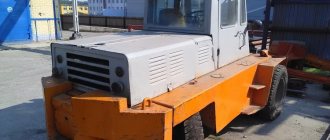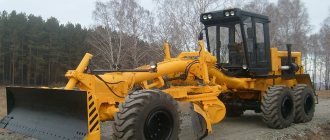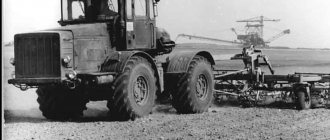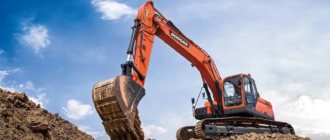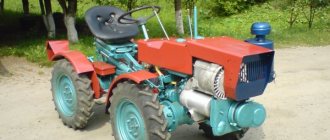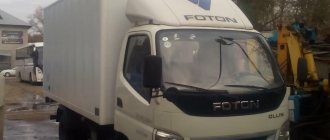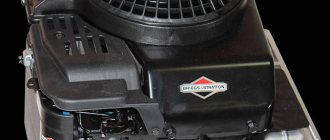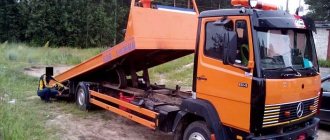Forklift DV 1661, DV 1621 (REVIEW, CHARACTERISTICS)
DV 1661, DV 1621 (Record-1) loader, with a lifting capacity of 1250 and 1600 kg, produced by the Bulgarian plant Balkancar Record (Balkancar Record) in Plovdiv and are the first light-duty forklifts in the history of the plant.
Main components of DV 1661
A three-cylinder diesel engine was installed - D2500 (D2500) with a cast-iron crankcase (a copy of the Perkins 3.152 internal combustion engine), at one time it was produced under license from Perkins. The power plant works together with a hydromechanical transmission (HMT) of models 6860, 6855, 6844 (old type), 6865.5, 6870, etc. (depending on the year of production of the loader). When choosing, it is better to give preference to new models of the gas turbine unit rather than the old one, due to the greater interchangeability and maintainability of the unit.
The injection system could have several different fuel pumps, this is the common Mefin 3832 F010 injection pump type DPA, completely mechanical, Mefin 3842 F420 with electric stop. There were options with the Czech Motorpal, which had a gear with automatic ignition timing. Manual fuel pump with 2 or 4 mounting holes.
The weak point of the presented loader is the drive of the hydraulic pump A54X (A72X), which is driven through an adapter coupling directly from the crankshaft; if it jams, the crankshaft most often bursts.
Modifications of Balkankar DV 1661 and DV 1621.
The main difference between the two presented models is the counterweight, the remaining components and assemblies are identical, so we will take the more common DV 1661 as a basis.
The main difference between the models is the boom lift height:
- DV 1661.28 – lifting height 2.8 meters;
- DV 1661.33 – lifting height 3.3 meters (most common);
- DV 1661.45 – lifting height 4.5 meters (telescopic cylinder).
Many parameters depend on the configuration of the forklift; the following were installed:
— solid, pneumatic, or bandage tires;
— modification of the carriage type or standard;
— fork length 1100 mm, extended version 1600 mm;
— a type of hydraulic distribution system РХ80, РХ 360;
— a steered axle with a one-way cylinder; on later versions of the loader, including Dimex D16, etc., a double-acting cylinder was installed.
Specifications
We present tabular data on the parameters of DV 1661
| characteristic | TECHNICAL SPECIFICATIONS | DV 1661.28 | DV 1661.33 | DV 1661.45 | |||
| Payload | Q Load capacity, | kg | 1600 | 1600 | 1600/700 | ||
| At the center of gravity of the load | c Distance to the back of the forks, | mm | 500 | 500 | 500 | ||
| Type of traction | Electr. (battery); diesel; gas engine | diesel | diesel | diesel | |||
| Control type | Automatic type, lever, crank, (standing, sitting water) | steering, seat water | |||||
| Tires | V-massive, L-pneumatic, SE-superelastic. | L/(SE) | L/(SE) | L | |||
| Wheels (x-drive) | Number of front/rear | 2x/2 | 2x/2 | 2x/2 | |||
| dimensions | Lifting characteristics | h3 Maximum lift, | mm | 2800 | 3300 | 4500 | |
| h2 Normal free rise, | mm | — | 180 | — | |||
| h5 Special free lift, | mm | 1350 | 1350 | ||||
| Fork sizes | s/b/l, | mm | 40/100/950 | 40/100/950 | 40/100/950 | ||
| Incline | Lifting device forward a/backward b, | ° | 6°/10° | 6°/10° | 4°/5° | ||
| dimensions | 1-2 Length incl. the back of the fork, | mm | 2031(2061) | 2025(2055) | 2230 | ||
| B Width, | mm | 992 | 992 | 1040 | |||
| h1 Height with lifting device lowered, | mm | 1920(2000) | 2250(2200) | 2125 | |||
| h4 Height at max. lifting the lifting device, | mm | 3335 | 3875 | 5195 | |||
| Turning radius | Wa External, | mm | 1800 | 1800 | 2000 | ||
| Distance to load | X, | mm | 390 | 385 | 410 | ||
| Working corridor width | Ast4 with pallets 800x1200/1000x1200, | mm | 3510/3580 | 3510/3560 | 3415/3615 | ||
| exp. character | Stability | According to DIN 15138 in Spanish from I to IV or according to ANFOR PNE 52216 according to FEM | stable | stable | stable | ||
| Speed | Movements with/without load, | km/h | 23/23 | 23/23 | 23/23 | ||
| Lifting with/without load, | m/s | 0,45/0,45 | 0,60/0,60 | 0,60/0,60 | |||
| Descent with/without load, | m/s | 0,50/0,40 | 0,50/0,40 | 0,50/0,30 | |||
| Traction force - max. | On towing device with/without load, | kN | 9,9 | 9,9 | 9,9 | ||
| Slope climbing - max. | With/without load | , | % | 22 | 22 | 18 | |
| weight | Own weight | Including battery, | kg | 2780 | 2800 | 3200 | |
| Axle load | With maximum load front/rear, | kg | 4000/450 | 4000/450 | 4900/485 | ||
| chassis | Tires | Number of front/rear | 2/2 | 2/2 | 2/2 | ||
| dimensions | front, | 21x8-9 | 21x8-9 | 21x8-9 | |||
| rear, | 5.00x8 | 5.00x8 | 5.00x8 | ||||
| Base | Y, | mm | 1255 | 1255 | 1435 | ||
| Track | Between the planes of symmetry of the treads, front/rear, | mm | 792/829 | 792/829 | 832/829 | ||
| Clearance | With rated load | m1 - at the lowest point, | mm | 102(95) | 102(95) | 102 | |
| m2 - in the center of the base, | mm | 108(95) | 102(95) | 108 | |||
| Brakes | Working (foot), parking (manual) | work/parking | work/parking | work/parking | |||
| Hydraulic, mechanical | hydr./mech. | hydr./mech. | hydr./mech. | ||||
| drive unit | Battery | View | starter | starter | starter | ||
| Voltage/capacity at 5 hour discharge, | V/Ah | 12/115 | 12/115 | 12/115 | |||
| Internal combustion engine | Manufacturer - type | D2500K | D2500K | D2500K | |||
| Power, | kW/hp | 33/45 | 33/45 | 33/45 | |||
| Rotational speed, | r/min | 2250 | 2250 | 2250 | |||
| Number of strokes/cylinders/displacement, | cm3 | 4/3/2500 | 4/3/2500 | 4/3/2500 | |||
| Clutch | View | hydrotrans | hydrotrans | hydrotrans | |||
| Inclusion | View | fur. | fur. | fur. | |||
| Number of speeds or gear stages, forward/reverse. | 1/1 | 1/1 | 1/1 | ||||
| Transmission mechanism | View | hydrodyne | hydrodyne | hydrodyne | |||
Consumption rate, l/machine-hour – 2.9 diesel fuel
General view and installed equipment
The DV 1661 loader consists of:
1 – HDP (automatic transmission); 2 – brake system; 3 – control system; 4 – lifting boom; 5 – hydraulic system; 6 – steering wheel; 7 – protective arches (cover); 8 – muffler; 9 – oil cooler (gearbox cooling); 10 – protective grille; 11 – coupling device; 12 – counterweight; 13 – steerable bridge; 14 – swivel wheel; 15 – bed (chassis); 16 – D2500 engine; 17 – pitchforks; 18 – drive axle wheel; 19 – hydraulic distributor (command device); 20 – poly; 21 – protective cover; 22 – loader electronics; 23 – driver’s seat; 24 – fuel tank.
Is it worth buying?
Recommended for purchase. In its budget (150-250 rubles) it is an excellent loader in its class. Great for small warehouses or businesses.
Pros:
— all spare parts are on sale;
— good diesel with low consumption;
— small, maneuverable;
— relatively easy to maintain and inexpensive;
- everything is mechanical.
Minuses:
— Location of the hydraulic pump (with a wedge - goodbye crankshaft);
— You can remove the box for repairs only with the engine by removing the counterweight;
- difficult to find a living specimen.
Video of work:
Bulgarian loaders
Balkancar loaders
Among the loaders successfully operating in Russia, the most popular was and remains the Balkancar-Record equipment. Created in the mid-50s of the last century, the joint-stock company is today one of the leaders among manufacturers of Bulgarian forklifts. The company has repeatedly received well-deserved awards at international technology exhibitions, and its products have been successfully used in most European countries for decades.
Today, forklifts are produced by such well-known companies in Bulgaria as Hercu Milko Tanev De-Van, Romex Car, Virus and others, but the products of the Balkancar concern are traditionally considered the most durable and reliable. So what is the secret of the popularity of these Bulgarian cars?
Main features of Balkankar loaders
Stylish, compact and powerful loaders, developed by the company’s engineers and designers, differ not only in their load capacity and lifting height, but also in different types of power units, ease of operation and the presence of additional functions. Designers are developing new compact forklifts, adding new advanced machines to the lineup every few years.
The main design features of Record loaders can be considered compliance with:
1. Safety standards and requirements. So the cabin is installed on the chassis using elastic fasteners. This ensures maximum sound and vibration insulation inside.
2. Global environmental standards. The emission level of gasoline and diesel forklifts is so high that these machines can be used for short periods of time even indoors.
3. High efficiency when working. The loaders have proven themselves to be excellent when working in open areas with uneven surfaces or unstable soil. In addition, these machines have high maneuverability, ergonomics and maintainability. They are reliable in operation, easy to maintain and repair.
The main advantages of Bulgarian forklifts
If we talk about the advantages of the Record technology, we should note the main ones, namely:
· the ability to select a model with suitable load capacity (from 1 to 8 tons) and lifting height (from 2 to 6.5 meters);
· a huge selection of both new and used loaders of various modifications, which allows you to choose a unit of the required power at the best price;
· high reliability, excellent quality and good service life of Bulgarian forklifts. With proper maintenance, any model can last over 20 years;
· the use of modern developments and innovative technologies makes it possible not only to increase the efficiency of loaders, but also to improve old models (and therefore make their operation more efficient);
· strict quality control at all stages of production guarantees the absence of manufacturing defects and excellent operation of the loader in any production;
· many service and dealer centers provide further warranty and post-warranty service, and the availability of parts for all components and systems of the loader in auto parts stores allows even the most complex repairs to be carried out without problems.
Areas of application for Balkankar forklifts
Record forklifts are used to transport heavy loads on pallets in limited space over long distances, as well as to store them on racks.
In most cases, forklifts are used in warehouses, where their compact size, maneuverability, technical characteristics and capabilities can be appreciated. Such machines are indispensable in warehouses of finished products at enterprises, in woodworking shops, in warehouses of transport companies involved in the delivery and storage of goods.
Such equipment can be no less in demand in construction, when storing materials in open areas and loading and unloading large cargo.
“Record” forklifts have always been and remain a widespread loading warehouse equipment in our country. They are appreciated for their ease of maintenance, the use of inexpensive spare parts in the design, excellent technical data and an increased degree of safety during operation. At the same time, forklifts from Bulgaria are cheaper than famous brands, which is very attractive for buyers and renters.

